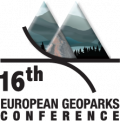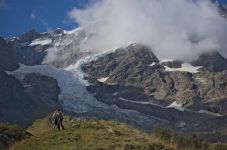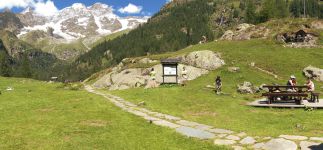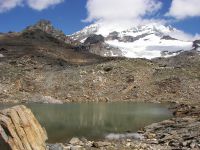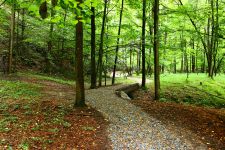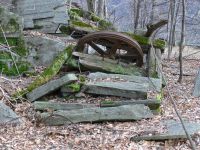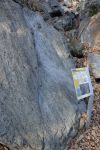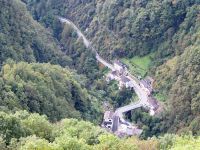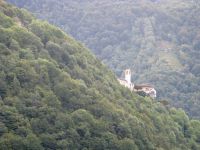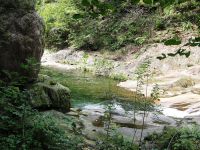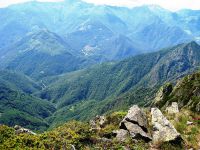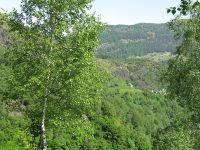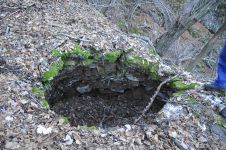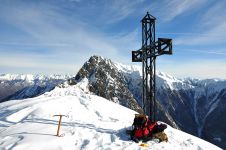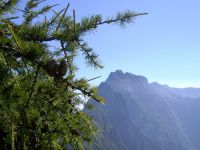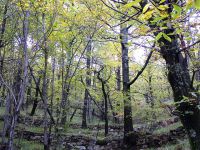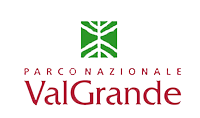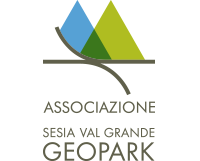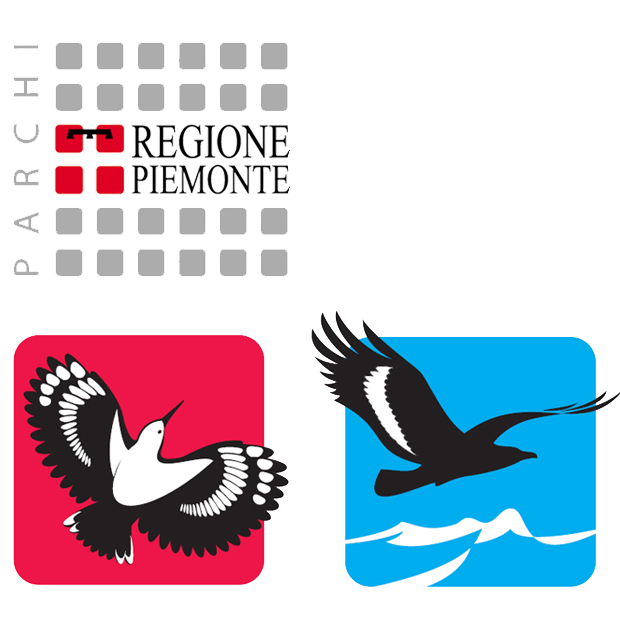- Home
- Geotourism
- Thematic Trails
Thematic Trails
GLACIOLOGICAL TRAIL
The Glaciological Trail in Alagna, among the few of its kind in Italy, follows part of the Sesia Valley and then enters the Bors side valley, along a comfortable path taking a maximum of 2 hours. The trail starts at an altitude of 1500 m at Acqua Bianca and ends at the Alp Fun d'Ekku, at 2070 m. The route offers an outstanding view of the south face of the Monte Rosa massif; along the way there are some panels for the hiker, showing the action of the glaciers and their effects, with short texts which are easy to understand, illustrated by numerous images.
At each stage it is possible to discover the shapes of a glacial valley, seeing cirques, hanging valleys, waterfalls and glacial gorges. There are pot holes and rocks smoothed by the action of the ice, and it is possible to read information on the climatic changes of the past and those related to the last million years, during which the great glaciations occurred.
The last stretch of the route is a spectacular walk along the ridge of a lateral moraine to the Fun d'Ekku alps, end-point of the route and a wonderful overlook onto the glaciers of the southern side of Mount Rosa.
CIMALEGNA GEOLOGICAL-PEDOLOGICAL TRAIL
This path is at an altitude of about 3000 meters, with 8 explanatory panels illustrating the geological history of this sector of the Alpine chain, the main rocks visible and their soils. The trail starts from the Passo dei Salati, at 2936 m, descends to the historic Angelo Mosso Scientific Institute, at Lake Bowditch and continues to the former Rifugio Vigevano; then it goes west to Col d'Olen (2881 m) and climbs up to the Corno del Camoscio (3024 m) where a 360° panoramic view shows the southern side of Monte Rosa, the Sesia and the Gressoney valleys; the route finally descends towards the north, returning to Passo dei Salati.
The plateau of Cimalegna, on which the route winds, is a glacial plateau and an ideal place to examine the geological history of the north-western Alps, with particular regard to the geological dynamics of the last 200 million years. The panels explain, with pictures and sketches, the geological history of this area starting from an ancient ocean, Tethys, up to the formation of the Alps, also dwelling on the soils, which have developed in unusual conditions due to the presence of an almost flat area at high altitude and with extreme weather conditions.
RIVALENTI PATH
Made in the summer of 2014, thanks to the GAL Terre del Sesia (Local Action Group) and the municipality of Vocca (VC), the path is reached from Isola di Vocca; it is a short and easy route that allows tourists and scholars to reach the rocks of the deep crust along the river Sesia. They are the deepest rocks of the magmatic system of the ancient volcano, and were formed at a depth of about 25 km, being deformed while they crystallized.
The path, by the will of his pupil Professor Silvano Sinigoi, was dedicated to Professor Giorgio Rivalenti, an authority in the field of geology, former Professor of Petrology and Petrography at the University of Modena, who focussed his research on the Ivrea-Verbano area.
MINES AND METALLURGY IN HIGH SESSERA VALLEY
In Alta Valsessera (Biella), starting from Bocchetto Sessera, along the Panoramica Zegna, it is possible to visit an area of notable archeo-mining and archeo-metallurgical interest, dating back to the XVI-XIX centuries. Excavations and restorations made it possible to see structures showing ancient exploitation of chalcopyrite, magnetite and silver-rich galena deposits. A network of paths with explanatory panels takes visitors to two archeo-metallurgical areas, each with different stories: the first one is Rondolere, site of processing of magnetite for the production of iron; the second one is the so-called “Opificio” (factory) on the right bank of the Sessera river; this was intended to treat mixed sulphides of silver-bearing lead, copper and iron, with an infinitesimal percentage of gold. Even today the clues that reveal the existence of abandoned mines and buried or reconverted production plants are clearly recognizable: the overall modification of slopes and topography, surface and underground hydrography, soil and water chemistry; the creation of artificial morphologies; the fossilization of paleosols. It thus becomes evident how human activities have been influenced by geological history, and the geological landscape has, in turn, been transformed by human action.
Information: http://www.geoparcominerariovalsessera.eu
THE USE OF STONE
The trail is in the territory of the municipality of Beura and focuses on the secular history which connects the population of these mountains with the use of the stone. Streets, mule tracks, walls, supports, tools of everyday life, both rustic buildings and stately homes, everything was made with local stone. Commercially known as "beola", this stone has been the building material par excellence since antiquity. It is still quarried today in the Beura area in three different varieties, and is especially appreciated as a facing material.
In about an hour (plus time for stops) you can reach the end of the path, which has a difference in height of 279 m and it is easily walkable, even if there are some steep stretches. The itinerary, illustrated by 11 panels, starts from the Town Hall of Beura, crosses the built-up area and climbs up along the well-marked paved road that leads to Bissoggio.
The departure can also be reached by train on the Milan-Domodossola FS line.
Information: www.parcovalgrande.it/
GEOLOGICAL TALES: TRAVEL IN SPACE AND TIME IN THE DEPTH OF THE EARTH
The geological trail between Vogogna and Premosello Chiovenda is an itinerary with panels that illustrate a clear section through the continental crust, with rocks formed at different depths and at different times. The route is simple and clearly defined but with some exposed stretches.
It starts from the castle of Vogogna, climbing up towards the “Rocca”, and then continues along the rocky cliffs overlooking the plain of the Toce river up to Premosello. During the walk we pass from the European paleocontinent, involved in the genesis of the Alps (50 - 30 million years ago), to the African paleocontinent, which preserves rocks and structures formed about 300 million years ago. In the most western part it is possible to see how the rocks have been deformed by friction along the "Canavese Line" (which is part of the fault system called the "Insubric Line") until it reaches rocks that belonged to the Earth's mantle, normally at a depth of 30-35 km and here brought back to the surface by tectonic processes. Along the way it is possible to make another interesting encounter: so-called pseudotachylites, rocks that testify to ancient earthquakes. A panoramic view-point over the valley below lets visitors see clearly the effects of the former extensive glaciers on the landscape.
Information: www.parcovalgrande.it/
VAL CANNOBINA
This is an area of exceptional geological interest as well as being of interest both for its landscape and its environment.
In this area the intermediate continental crust, with rocks normally present at depths between 15 and 35 km, can be clearly seen. There are at least three hiking trails of great geological interest, where the characteristics of the places (such as the shapes, lines and colors) highlight the historical evolution of the rocks and the processes, such as glaciations or river erosion, involved.
A small geological museum of the Cannobina Valley has been set up in Gurro, along the second route among those described below.
ROUTE N. 1: ORASSO – SPOCCIA
The itinerary starts from the square of Orasso village and follows the Rio Orasso valley. After passing through the village of Orasso, located on a typical moraine terrace, the path enters a dense oak, beech and chestnut forest, which still reveals precious evidence of ancient mountain culture (walls, terraces, old lawns now growing wild, tanks for processing hemp, and remains of old rural houses). In the walls you can find some rounded ochre-colored rocks which are peridotites. Along the route you can see evidence of glaciers as well as numerous torrents, which descend from the south side of Mount Gridone eroding deeply - an example is the gorge of the Rio Gana. In the first part of the route you can see outcrops of some typical rocks such as kinzigites and pegmatites. Then, after passing a small mountain pasture (Alpe Gheppio) the footpath goes down to the village of Spoccia. In this stretch towards the town the presence of numerous veins in the outcropping appinites and mylonites is interesting.
This hiking itinerary is easy; it has a difference in height of 300 m and without snow it is walkable all year round.
ROUTE N. 2: ORASSO - CURSOLO - GURRO - DAILA – PROVOLA
The itinerary starts from the square of Orasso village going towards Cursolo village, along the route of the ancient trade road of the XII century, and later named the "Strada Borromea" in memory of a pastoral visit of Cardinal Borromeo, bishop of Milan, in 1574.
Along the way, artifacts and other evidence of the old way of life in the mountains can be seen by the hiker. A visit to the Oratorio del Sasso is also recommended: it is testimony to popular religiosity, with some of the most ancient frescoes of the valley which have been recently restored.
Shortly before reaching Cursolo, the path passes a river with interesting geomorphological features (Rio Eira) and immediately after an old mill, the path descends towards the Airetta hamlet, and then downstream to cross the Cannobino torrent on a little bridge (Teia bridge), which goes beyond one of the deepest and most evocative river erosion gorges. Here in the past, the logs were floated down the stream to get the timber to Cannobio. Fluvial terraces, erratic boulders like the Gurro one, remnants of an old marble quarry ... all attract the interest of the hiker.
After passing through the village of Gurro, with its geological museum of the valley, it is possible to reach the small alps of Daila and Provola, located on the ancient valley floor, where it is easy to recognize an ancient peat bog and ancient sheepback rocks (“roches moutonnées”), evidence of the passage of a glacier.
The route has a difference in height of 440 m and without snow it is walkable all year round.
PERCORSO N. 3: ORASSO - MONTE TORRIGGIA
The climb to Monte Torriggia gives wonderful views of both Valle Vigezzo and Valle Cannobina, up to the Monte Rosa massif, and also a panoramic view of the Sesia Val Grande Geopark area. Starting from the square in Orasso, and before reaching the hamlet of Monte Vecchio, the path passes an erratic boulder, confirming the role of glaciers in shaping the area. This boulder also has some engravings on it There are also frequent outcrops of the kinzigites, typical rocks of the area.
During the ascent the view extends beyond the valley, towards Mount Zeda and the basin of Gurro. After passing Monte Vecchio, the path enters a thick beech forest to approach the summit, with its rocky gabbro spires. A steep ridge finally brings the walker to the summit of Monte Torriggia, with a dense wood of "mugo pines" growing abundant and lush.
The hiking and route has a vertical drop of 1000 m; it is a hiking itinerary of medium difficulty; with a difference in height of 1000 m and and the recommended time is April to November.
THE PATH OF CUPELS IN BÈE
This is a loop around Monte Cimolo where walkers can find boulders with cupels, pastures and hamlets. The walk, taking about three hours, uses a path that is both accessible to all and well-marked, going through the woods overlooking Lake Maggiore.
The tour begins in Bée, from Piazza Barozzi, and continues towards the hamlet of Roncaccio and its medieval center. Continuing towards the woods, the path reaches the Sciuvlino chapel with a fresco of the 16th century depicting the enthroned Virgin Mary; then the path quickly reaches the first site, where the 'coppelle del Coss' are on a boulder; others boulders are in sequence along the way in three different areas: 'Cascina del Viturin', 'Albagnano' and 'Mulin Feree'.
ENGRAVINGS OF VIGNONE
The engraved rocks are located in the hamlet of Bureglio and in the localities "Cà di müi" and "Mött ad Crana" in the south-west of the village. The sites are located on the watershed between the Intragna valley and the hills of Beè and Vignone.
In the village of Vignone there is also an architrave of serizzo (local stone) on the external wall of a private house, with an engraving of three anthropomorphic figures, rather unusual in the Verbano-Cusio-Ossola territory.
ITINERARIO GEOLOGICO DA TRAREGO A VIGGIONA
The geological itinerary follows an existing path, shown on the maps of the paths of the Municipality of Trarego Viggiona. It starts from the village of Viggiona, from the church square; from here it continues along the path indicated as R42 on the Excursion Map to the top of M.Carza from which, along the path R40, it descends to the village of Trarego (locality Cheglio). The itinerary is described in detail in the publication "Geological Path Trarego-Viggiona" by Paolo Millemaci, published on March 31, 2018. It is a path of geological and geomorphological interest. The rocks that emerge there are part of a wide geological area called "Massiccio dei Laghi" which, for the most part, represents a fragment of the deepest part of an ancient mountain chain, brought to the surface by tectonic movements that acted for millions of years. These rocks have been shaped both by water and ice, with a glacier present between a million years ago and about 20,000 years ago, as evidenced by the presence of glacial terraces and deposits, erratic boulders and valleys with a U-shaped cross section, typical of glacial action.
The route does not have illustrative panels but the guide "Geological Path Trarego-Viggiona " (in Italian) is available: the paper version can be found at the tourist office and the Tactile Museum of Natural Sciences of Trarego and at the Tourist Office of Cannobio.
Where to find the Italian guide:
Trarego Tourist Office: Viale dei Martiri – Trarego Viggiona (VB); tel. +39 377 16 99 972; e-mail: This email address is being protected from spambots. You need JavaScript enabled to view it.
Tactile Museum of Natural Sciences of the lake and the mountain: Contrada San Mauro, Trarego Viggiona (VB) tel. 0323 840809 fax 0323 670731; e-mail: This email address is being protected from spambots. You need JavaScript enabled to view it.;
Cannobio Tourist Office: via A. Giovanola n. 25, Cannobio (VB) Tel. +39 0323 71212; Fax +39 0323 71212; email: This email address is being protected from spambots. You need JavaScript enabled to view it.
Copyright © 2014 Sesia Val Grande Geopark - Email This email address is being protected from spambots. You need JavaScript enabled to view it.



